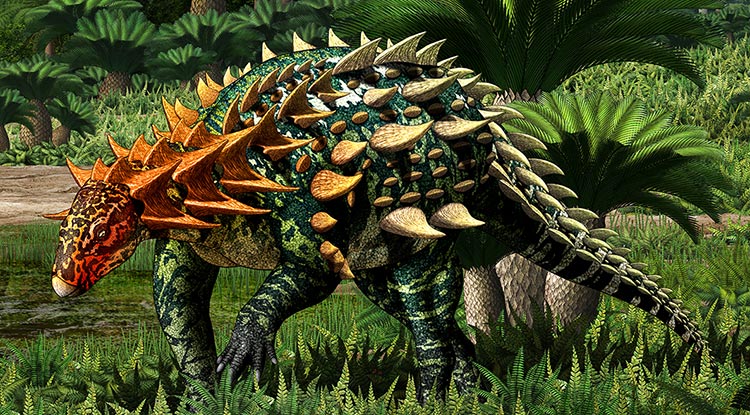
Indiana University of Pennsylvania graduate and molecular biologist John J. Kopchick has a new—but very old—namesake, thanks to IUP biology professor Shundong Bi.
Kopchick earned a bachelor's degree in 1972 and a master's degree in 1975 from IUP, both in biology. Currently living in Athens, Ohio, he is a professor of molecular biology and the Goll-Ohio Eminent Scholar at Ohio University. He is a co-inventor of the drug Somavert, which combats acromegaly, a growth hormone disorder. Kopchick was raised in Indiana.
 In 2017, Bi was part of a team that found remains of an armored dinosaur in the Yuxi region of Yunnan province in China. Research on the specimens began in 2019.
In 2017, Bi was part of a team that found remains of an armored dinosaur in the Yuxi region of Yunnan province in China. Research on the specimens began in 2019.
In 2022, the team made the name of the dinosaur official: Yuxisaurus kopchicki. The name comes from Yuxi, the region where the remains were found, and kopchicki, in recognition of Kopchick’s contributions to biology and to IUP, Bi said.
News of the discovery of the new species, which belongs to the thyreophoran group (the same as its distant cousin the Stegosaurus), was published in March in the journal eLife.
Scientists believe the animal lived around 192–174 million years ago during the Early Jurassic period. The remains found by Bi and his team are believed to be evidence of the first thyreophoran from that time period to be recognized in the region.
Since the announcement, publicity about the discovery and the origin of its name has been carried in a number of international journals and by CNN.
More than 120 bone deposits were retrieved from the dig site, giving the researchers enough material to confirm a new species, Bi said. The remains included multiple fragments of a single skeleton, including parts of the armor plates, limbs, jaws, and skull. The dinosaur's heavy build and distinctive armor hinted that the researchers had a new species on their hands, Bi said.
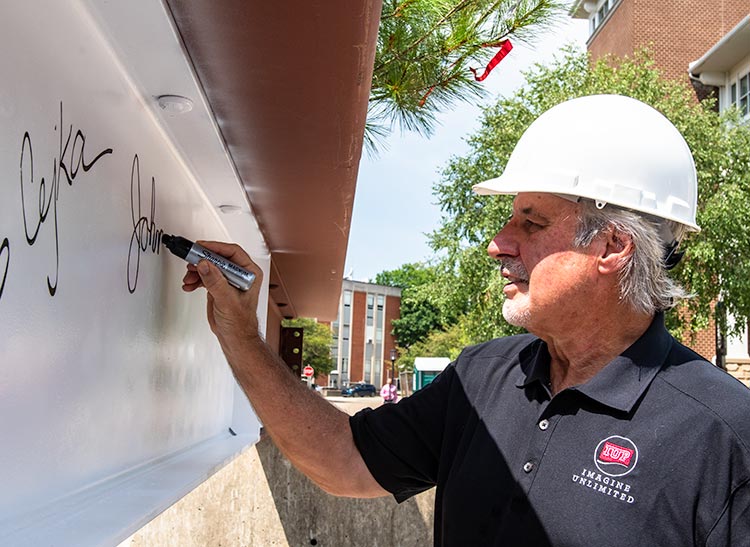 Dr. John J. Kopchick
Dr. John J. Kopchick
Additionally, the findings show how diverse the group of dinosaurs was and how rapidly they spread across the northern hemisphere, he said.
“I first met John Kopchick at a reception at IUP,” Bi said. “He was very interested in my research, and of course, I knew about his work and his contributions to IUP and to our college.”
In 2018, IUP’s Council of Trustees approved the naming of the College of Natural Sciences and Mathematics in honor of Kopchick and his wife, Char, a 1973 IUP graduate who is the assistant dean of students at Ohio University.
Trustees also approved the naming of the university’s new science building (currently under construction) in honor of the Kopchicks in recognition of the couple’s generosity and support of IUP. The Kopchicks made a $23-million gift to the university’s Imagine Unlimited comprehensive campaign in 2018 for science and mathematics initiatives at IUP. It is the largest gift in IUP’s history.
John J. and Char Kopchick Hall, a $90-million, 142,536-square-foot science and mathematics facility, which will be home to the John J. and Char Kopchick College of Natural Sciences and Mathematics, will be open in fall 2023.
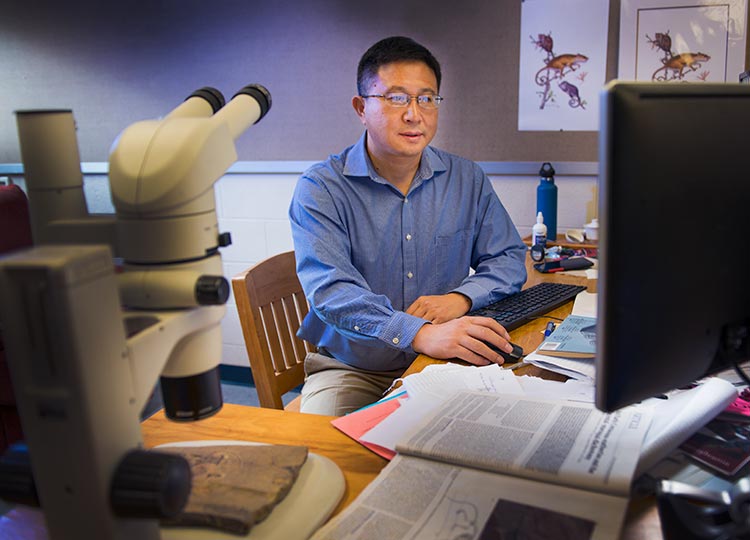 Dr. Shundong Bi
Dr. Shundong Bi
“I talked with Dr. Steve Hovan, my college dean, about my plan to name the new species in Dr. Kopchick’s honor, and he was supportive,” Bi said. “Dr. Kopchick liked the idea, so the name became official this year.”
While he has both a college and a building named in his honor, and also received IUP’s Distinguished Alumni Award in 1987, Kopchick calls the naming of Yuxisaurus kopchicki “one of the most remarkable and certainly unusual recognitions I’ve ever received. I’ve been blessed to have had several awards, but this is the best!”
“My colleagues think it’s absolutely ‘cool,’ and I agree. And they want IUP to make and market stuffed ‘Kopchicki dolls,’ saying their kids would love them!" he said.
“My wife, Char, jokes that Yuxisaurus kopchicki looks a little bit like me—I’m not sure about that, but I am certainly proud and humbled by Dr. Bi’s recognition of my work and contributions to the field in this extraordinary way. I will freely admit that I never dreamed of sharing my name with a dinosaur, but I am absolutely thrilled to be part of this important scientific discovery.
“Dr. Bi is an outstanding and talented researcher, scholar and teacher,” Kopchick said. “IUP is very lucky to have him, and I am very proud that he is a member of the talented faculty at my alma mater.
“Char and I are both very grateful to IUP for providing us a solid foundation for our careers and for our lives, so having this recognition come from an IUP faculty member makes this honor even more meaningful. Actually, the more I look at it, the more I think Y. kopchicki and I are related,” he said.
Bi, who was the senior author of the paper published by eLife, described the species in the publication as “possibly a facultative quadrupedal. It was primarily adapted for walking on four legs, but also able to walk on two legs.”
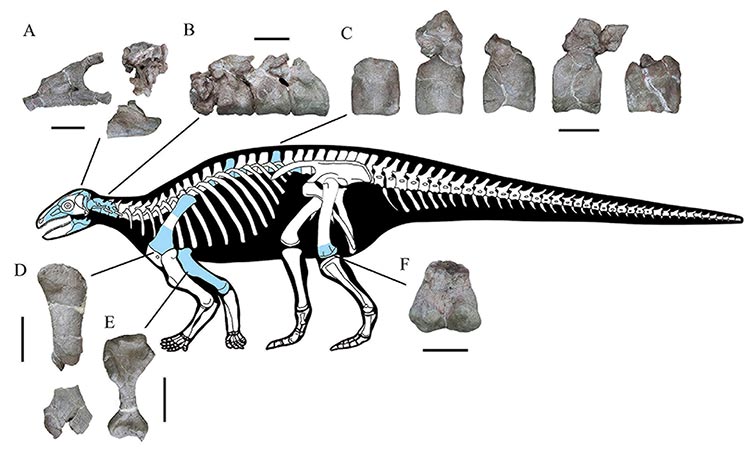
Bi said in his paper that more than 120 bone deposits were recovered from the dig site, giving the researchers enough material to confirm a new species. These remains included multiple fragments of a single skeleton with parts of the armor plates, limbs, jaws, and skull. Research on the retrieved specimens started in 2019.
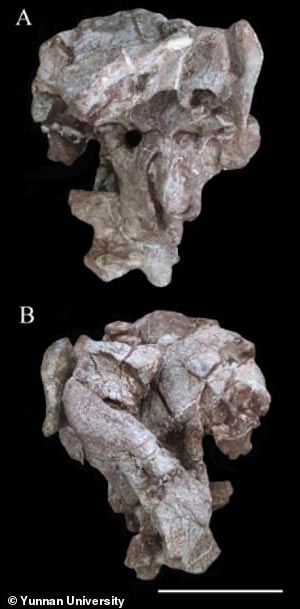
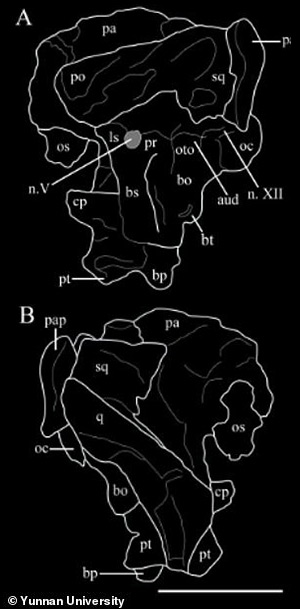 More than 120 bone deposits were recovered from the dig site, giving the researchers enough material to confirm a new species
More than 120 bone deposits were recovered from the dig site, giving the researchers enough material to confirm a new species
“Dr. John Kopchick and Char Kopchick are incredibly generous and dedicated alumni in every way possible,” Steve Hovan, interim dean of the Kopchick College, said. “Not only do they provide financial support for our students and our programs, they are hands-on and involved with mentoring and helping students to succeed and to achieve their dreams, offering advice and networking opportunities. We are very grateful to them.
“We also continue to be so glad to have faculty members like Dr. Bi at IUP. He is a dedicated teacher and mentor and an internationally known researcher making cutting-edge discoveries, and he brings that expertise and experience into the classroom,” Hovan said.
Bi, who is a research associate at the Carnegie Museum of Natural History in addition to his work at IUP, has a number of discoveries related to prehistoric species to his credit.
In 2021, Bi was part of a team to identify a fossil specimen of a haramiyidan from China's Middle Jurassic epoch that researchers called an evolutionary “stepping stone” between Mesozoic fossils and living mammals.
Bi also was part of a discovery of a preserved dinosaur sitting atop a nest of its own eggs with fossilized babies inside, for the first time ever. The fossil was an oviraptorosaur (a genus of oviraptorid dinosaur).